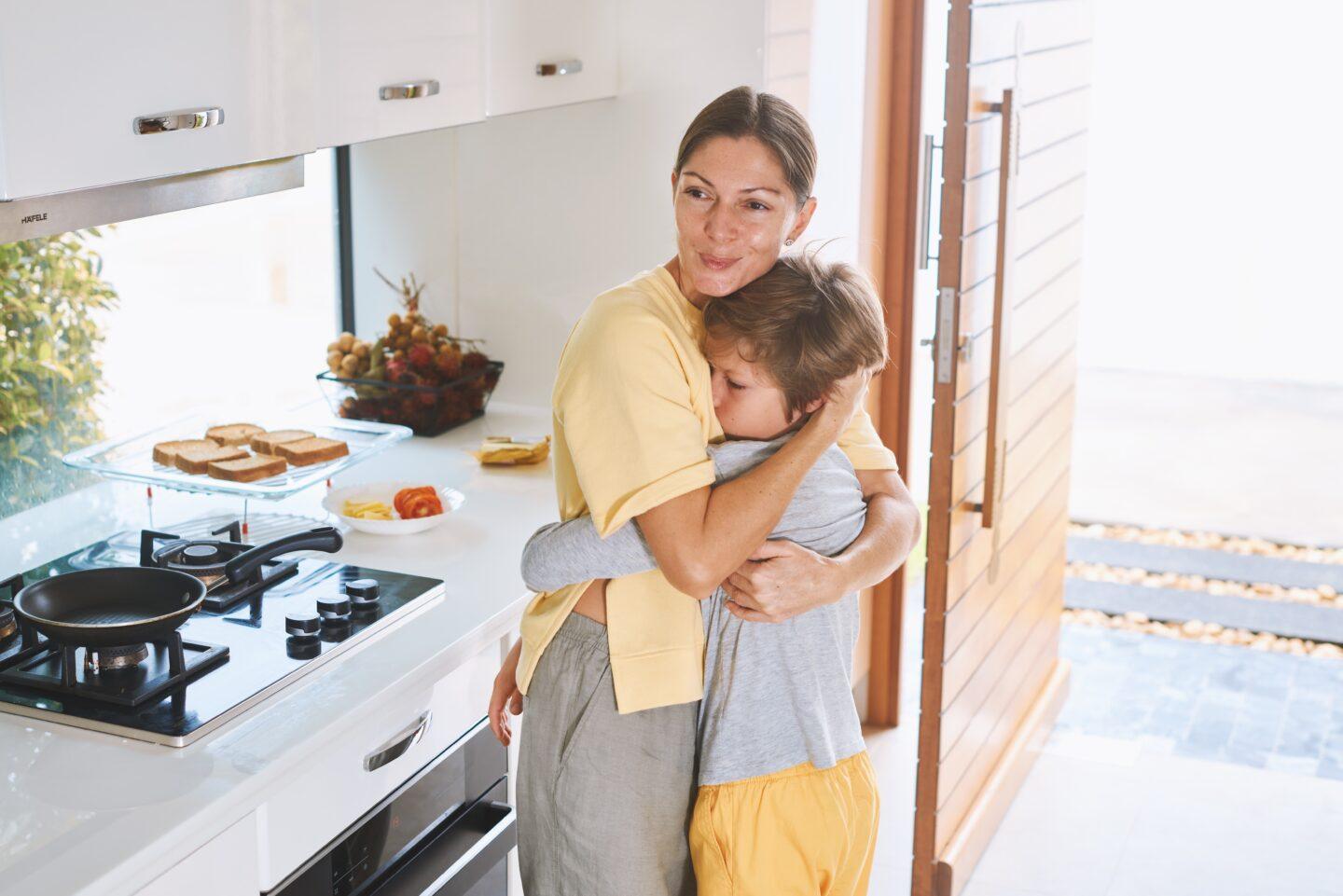5 things to do when your child is diagnosed with obsessive compulsive disorder (OCD)

OlgaPink/Twenty20
Actionable advice from a mama who has been there, too.
Table of Contents
My palms were sweaty. My heart was pounding. Low-grade nausea and swirling thoughts distracted me from the simplest tasks. Yes, I was experiencing anxiety: My 11-year-old child had just been diagnosed with obsessive compulsive disorder (OCD).
I couldn’t bear how utterly miserable he was and how quickly OCD was diminishing his world. As with most mothers in the animal kingdom, I physically reacted to seeing my child in pain.
Fortunately, the mama bear in me rose to the occasion, and I went into protection mode. But the question was, what does protection look like when a child gets an OCD diagnosis? And what do I have to do to get my child to real safety?
Related: 50 important child safety tips every parent needs to know
I didn’t yet know, but that primal instinct led me to find solutions, which showed up in the form of late-night research and guidance from mental health professionals. I’ve been on a 17-year journey to see my son get well, and now I help other families find the tools to navigate the complexities of an OCD diagnosis through my nonprofit.
OCD in children requires advocacy
The World Health Organization (WHO) once listed OCD as one of the top 10 most debilitating disorders. Thankfully, therapy and medication can greatly improve quality of life in those with this diagnosis, however, many are still silently suffering. According to The International OCD Foundation (IOCDF), 1 in 200 children or teens has OCD and lives with symptoms for an average of two and a half years before getting professional help.
For adults, the average time it takes to get effective treatment is 11 years.
This is precisely why I want families to be informed so that children do not have to suffer unnecessarily without a treatable diagnosis.
Related: Anxiety in kids. What’s typical and what’s not
In the months after my son Jack’s diagnosis was confirmed, I became hypervigilant with my phone. I needed to know where it was at all times. I never turned off the ringer. OCD was presenting new challenges daily and I was like a fireman with a hose in hand, ready to put out the next fire. The problem is, you can never accurately guess what the next OCD-related, intrusive thought will tell your loved one—or what the resulting behavior will be in reaction to that thought.
Still new to OCD management, my phone rang one afternoon, and I got the following report from my son’s teacher: As her class was being dismissed, she looked over to see Jack’s belt on the floor, his shirt untucked.
Jack’s school has a strict dress code and clearly, this was odd. As her eyes went from the belt to Jack, he said, “I just need to leave that there.” OCD had convinced Jack his belt was “contaminated” and though this was not a terribly dramatic event, his teacher sensed something was wrong.
Related: It’s science: A major factor in child development? The mother’s mindset.
Luckily, rather than berating him about the dress code or questioning him in front of peers, she simply said OK and called me to find out what was going on. It was on that day I realized my own newfound understanding about my son’s disorder needed to be extended to those around him and that my advocacy for him was going to be vital.
Over the years, I’ve learned that families are often bewildered by the myriad challenges OCD presents. There are excellent resources available, but families are not always led in the right direction for treatment.
Here’s the road map I wish I had when we were first embarking on this journey, and what I share with other families once their child receives an OCD diagnosis.
Related: Postpartum OCD may be more common among new moms than we realized
1. Educate yourself
OCD is symptom-complex and is defined by unwanted intrusive thoughts that cause distress. Those obsessions and the resulting compulsions can change over time. Understanding how OCD traps your child will help you navigate the thoughts they are having and the resulting behaviors that often leave families frightened and frustrated.
Here are some educational resources that really helped our family:
- Spend time combing through the resources on the International OCD Foundation website
- Watch for informational livestreams on social media by the IOCDF OCD Game Changers
- Check out the podcast The OCD Stories, hosted by Stuart Ralph
- Read The Family Guide to Getting Over OCD by Jonathan Abramowitz, Ph.D, which has many actionable insights to share with your loved ones.
Related: 10 times your kid’s ‘bad behavior’ isn’t actually bad
2. Seek out the right kind of therapy
Exposure response prevention (ERP) is the gold standard for the treatment of OCD. Unfortunately, not all clinicians are trained in ERP and some families may not be aware of this technique, even if they’re already receiving mental health support. I’ve heard it countless times, “My child has been going to therapy [typically talk therapy] but their symptoms are not improving.”
Seek out a therapist trained in ERP for kids for the most effective treatment for your child. The IOCDF has resources on how to find a trained mental health professional in your area or via telehealth services. Medication may also help and can be used when symptoms are severe.
Related: How to find the best therapist for you (and what to expect)
3. Get the whole family on the same page
There is no doubt that positive, educated and coordinated family dynamics can aid in OCD treatment. But there are many things about dealing with OCD that are counterintuitive to the precepts of parental love and nurturing, and it may take some time for all family members to get on the same page.
For example, you should lead your child toward facing their fears—not shield them from the scary things OCD is telling them.
Uncertainty and intolerance of doubt are the hallmarks of OCD. Kids will constantly ask for reassurance (which is a compulsion), and will want you to accommodate their rituals, behaviors or fears.
Effective communication, setting expectations and boundaries, and learning to be an OCD coach at home is going to help the treatment process. Work with your child’s support team to help implement these practices at home.
Related: 12 powerful parenting phrases that make talking to kids easier
4. Advocate for your child at school
Take the opportunity to be the teacher. After sharing information about Jack’s OCD diagnosis with his teachers and coaches, we saw a lot of compassion and increased effort to explore accommodations that would foster his academic and extracurricular success.
Work collaboratively with educators. A fabulous resource for both parents and educators is Anxiety in the Classroom. Work together to find ways your child can keep up with their studies while navigating OCD. It can be done.
Related: 9 strategies every parent with an anxious child should try
5. Practice self-care and seek your own support
Join a support group. I can’t say enough about the comfort, growth and positive effects of engaging with other parents that are on the same mental health journey.
Make therapy appointments for yourself. Worry, doubt, exhaustion, progress disappointment and compassion fatigue are all common stressors for parents. You don’t have to do this alone.
Believe your child can get better. There may be daunting days ahead but, no matter what, don’t give up. From someone who’s been there, and has watched other families travel the same road, there are potholes, bumps and curves ahead. But know that you can source a unique road map for your family through the information available, and it will get you to your destination.





































